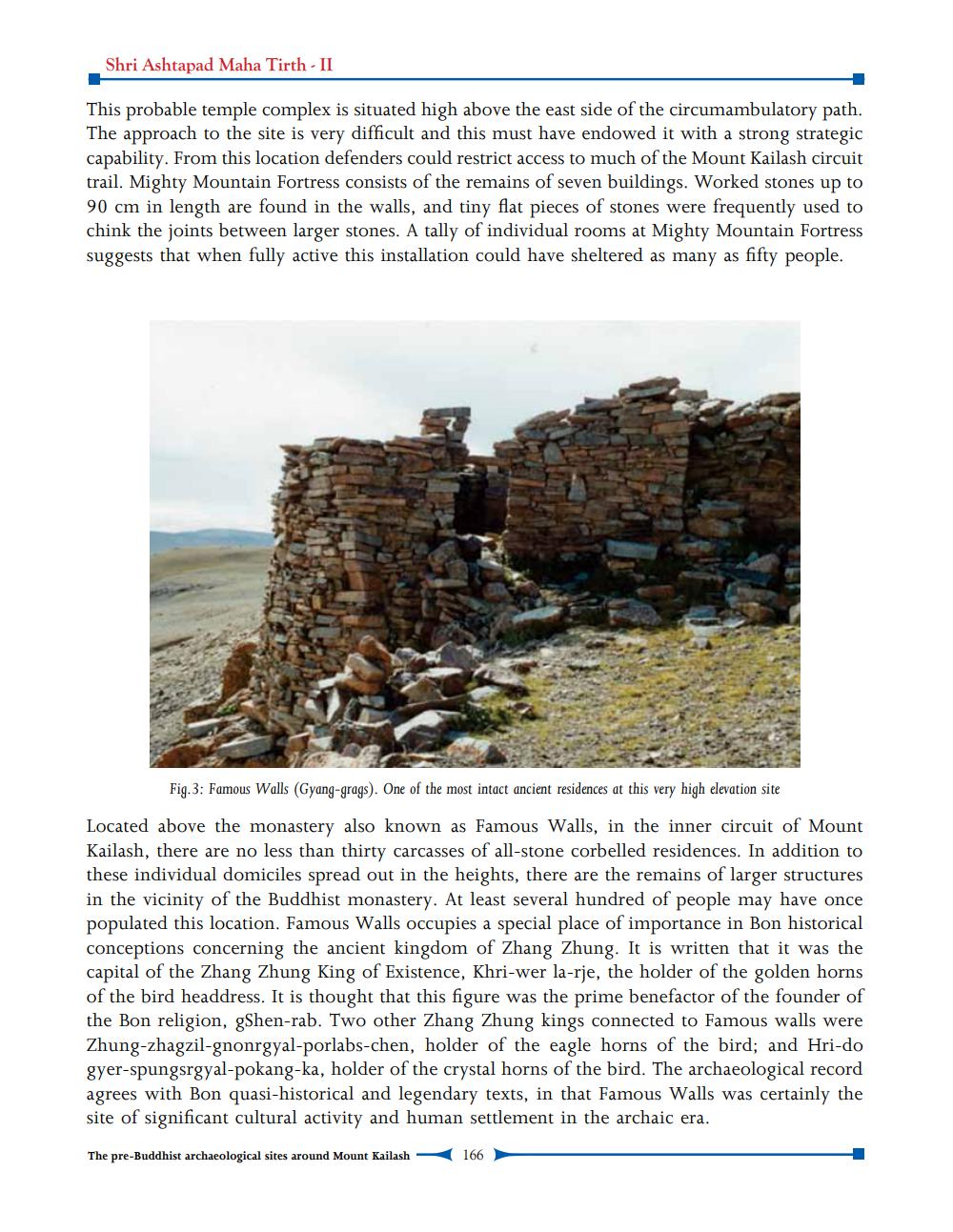________________
Shri Ashtapad Maha Tirth - II
This probable temple complex is situated high above the east side of the circumambulatory path. The approach to the site is very difficult and this must have endowed it with a strong strategic capability. From this location defenders could restrict access to much of the Mount Kailash circuit trail. Mighty Mountain Fortress consists of the remains of seven buildings. Worked stones up to 90 cm in length are found in the walls, and tiny flat pieces of stones were frequently used to chink the joints between larger stones. A tally of individual rooms at Mighty Mountain Fortress suggests that when fully active this installation could have sheltered as many as fifty people.
Fig.3: Famous Walls (Gyang-grags). One of the most intact ancient residences at this very high elevation site
Located above the monastery also known as Famous Walls, in the inner circuit of Mount Kailash, there are no less than thirty carcasses of all-stone corbelled residences. In addition to these individual domiciles spread out in the heights, there are the remains of larger structures in the vicinity of the Buddhist monastery. At least several hundred of people may have once populated this location. Famous Walls occupies a special place of importance in Bon historical conceptions concerning the ancient kingdom of Zhang Zhung. It is written that it was the capital of the Zhang Zhung King of Existence, Khri-wer la-rje, the holder of the golden horns of the bird headdress. It is thought that this figure was the prime benefactor of the founder of the Bon religion, gShen-rab. Two other Zhang Zhung kings connected to Famous walls were Zhung-zhagzil-gnonrgyal-porlabs-chen, holder of the eagle horns of the bird; and Hri-do gyer-spungsrgyal-pokang-ka, holder of the crystal horns of the bird. The archaeological record agrees with Bon quasi-historical and legendary texts, in that Famous Walls was certainly the site of significant cultural activity and human settlement in the archaic era.
The pre-Buddhist archaeological sites around Mount Kailash
166




